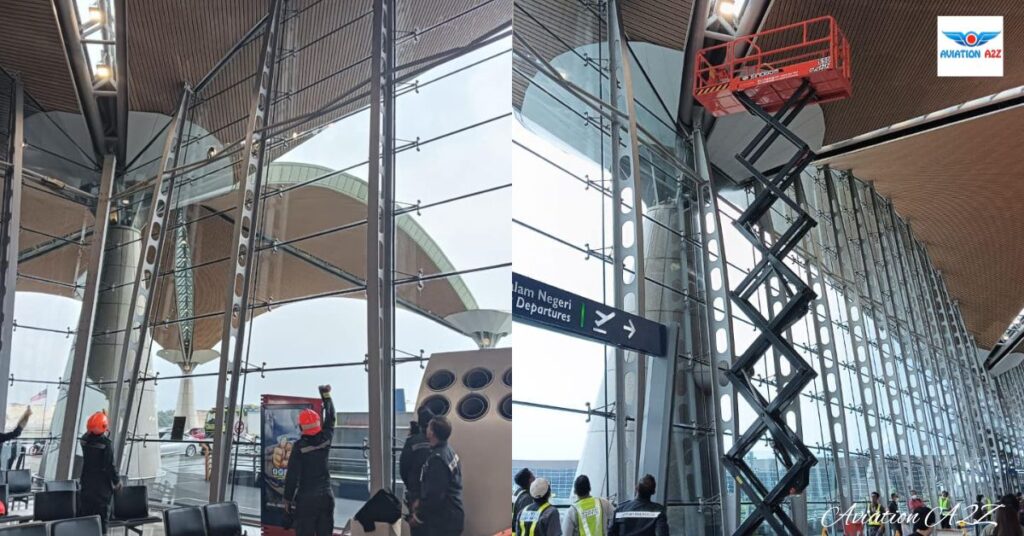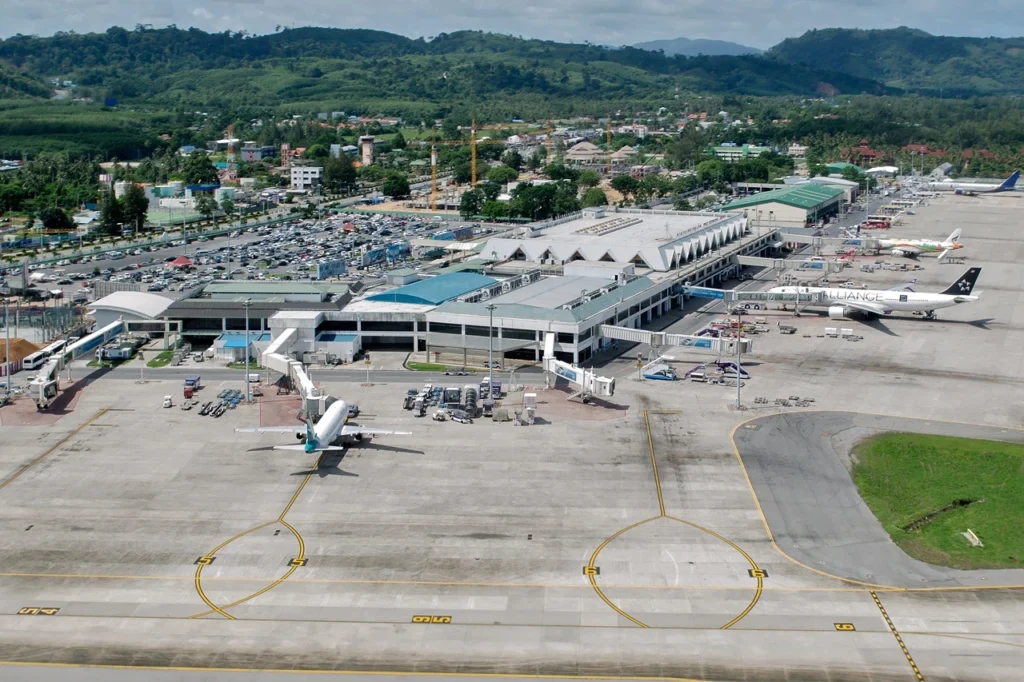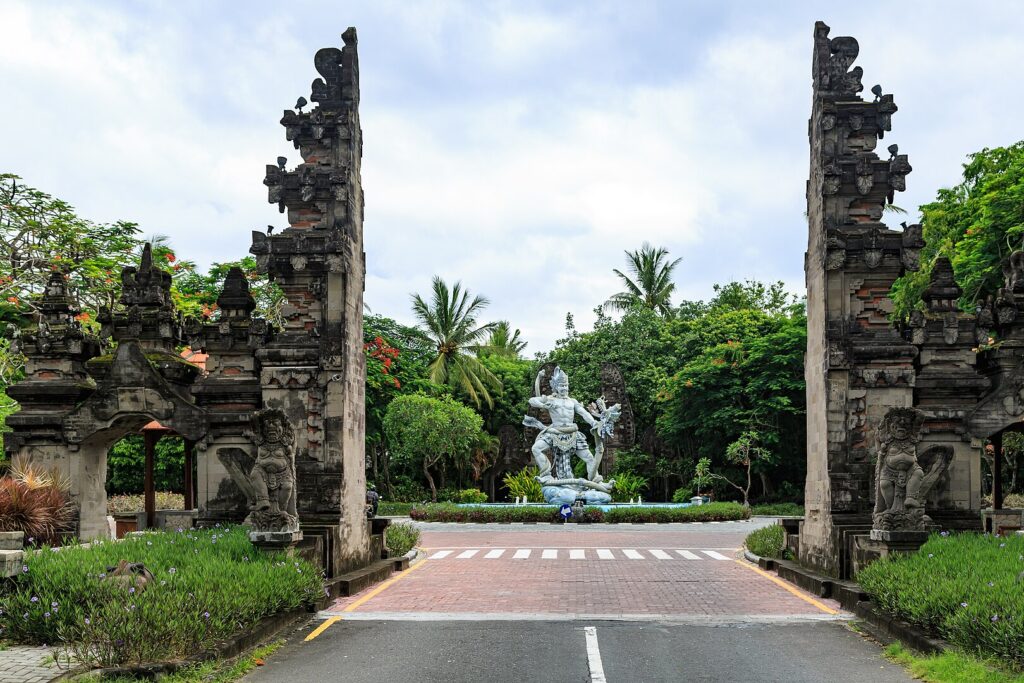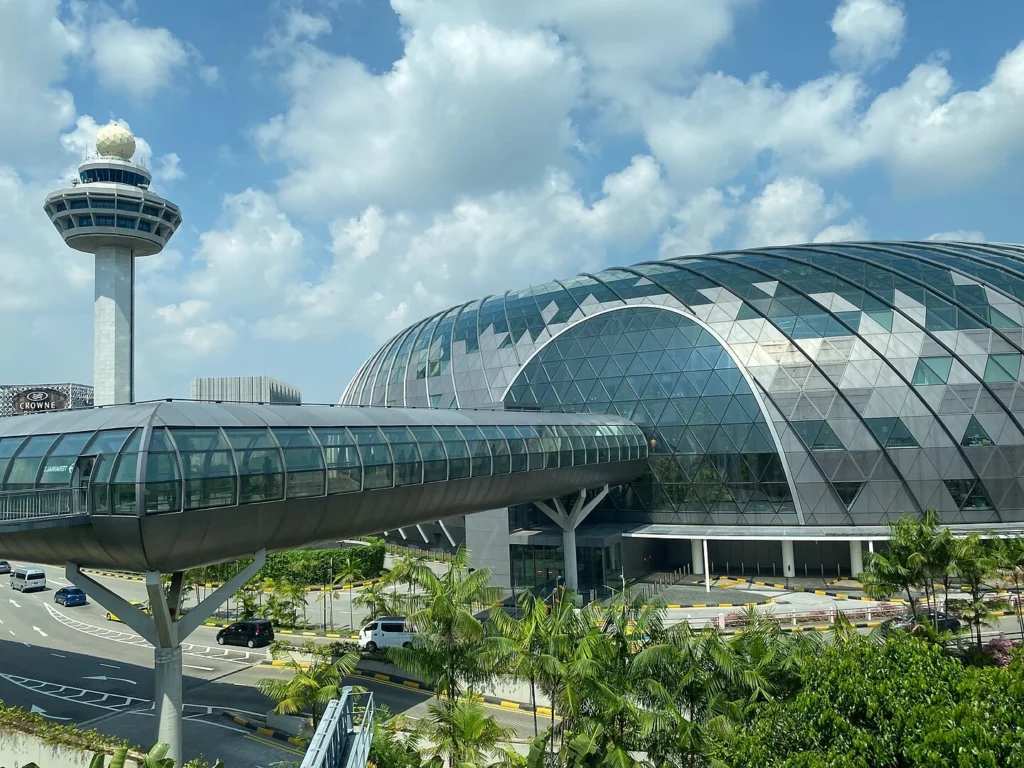
In December 2024, Southeast Asia’s aviation market achieved remarkable growth, driven by increasing demand for international travel and expanding airline networks. Major airports across the region experienced a notable rise in seat capacity, reflecting the recovery of tourism and the rise of new travel destinations.
Thailand, in particular, stood out with Bangkok Suvarnabhumi leading the charge in terms of capacity growth this month, while Singapore, Malaysia, and Vietnam also showcased significant gains.
This growth highlights the region’s growing prominence as a global travel hub, combining traditional powerhouses with emerging destinations to cater to both leisure and business travelers.
 Photo:- By Changi Airport Group, CC BY 3.0, https://commons.wikimedia.org/w/index.php?curid=39059376
Photo:- By Changi Airport Group, CC BY 3.0, https://commons.wikimedia.org/w/index.php?curid=39059376Southeast Asia’s Fastest Growing Airports
1. Bangkok Suvarnabhumi International Airport (BKK), Thailand
- Seats Added: 394,577
- Percentage Increase: 16%
Bangkok Suvarnabhumi once again leads the region in seat capacity growth. The 16% year-on-year growth in capacity highlights Thailand’s strong recovery in tourism, particularly for long-haul and regional travelers.
This growth is also fueled by Thailand’s consistent appeal as a global tourist destination and the return of high frequency on key international routes.
2. Singapore Changi Airport (SIN), Singapore
- Seats Added: 326,712
- Percentage Increase: 10%
Singapore Changi remains a dominant hub in the region, adding over 326,000 seats compared to December 2023. The 10% increase showcases the continued recovery in both business and leisure travel, supported by Singapore’s position as a popular transit hub.
 Photo: Malaysia Airports
Photo: Malaysia Airports3. Kuala Lumpur International Airport (KUL), Malaysia
- Seats Added: 240,206
- Percentage Increase: 11%
Kuala Lumpur International saw a notable 11% capacity increase, adding over 240,000 seats. This reflects Malaysia’s growing tourism sector and its importance as a regional aviation hub, mainly attracting traffic from neighboring countries and the Middle East.
4. Bangkok Don Mueang International Airport (DMK), Thailand
- Seats Added: 227,580
- Percentage Increase: 39%
Don Mueang Airport recorded a sharp 39% growth, adding over 227,000 seats. This rapid growth underscores the rising demand for low-cost carriers (LCCs) and short-haul flights within the region, with Don Mueang serving as a key hub for budget carriers and travelers alike.
 Phuket International Airport (HKT) | Photo: By Alex Beltyukov – RuSpotters Team – Gallery page http://www.airliners.net/photo//2272038/LPhoto http://cdn-www.airliners.net/aviation-photos/photos/8/3/0/2272038.jpg, CC BY-SA 3.0, https://commons.wikimedia.org/w/index.php?curid=27355320
Phuket International Airport (HKT) | Photo: By Alex Beltyukov – RuSpotters Team – Gallery page http://www.airliners.net/photo//2272038/LPhoto http://cdn-www.airliners.net/aviation-photos/photos/8/3/0/2272038.jpg, CC BY-SA 3.0, https://commons.wikimedia.org/w/index.php?curid=273553205. Phuket International Airport (HKT), Thailand
- Seats Added: 159,924
- Percentage Increase: 31%
Phuket’s 31% increase in seat capacity equates to nearly 160,000 added seats, highlighting its role as a major international gateway to Thailand’s southern tourist regions. Strong demand from European and Asian travelers for beach destinations continues to drive growth at this particular airport.
6. Denpasar-Bali International Airport (DPS), Indonesia
- Seats Added: 104,203
- Percentage Increase: 16%
Bali’s Denpasar Airport recorded a 16% rise in international capacity, equivalent to over 104,000 seats. Indonesia’s recovery in tourism, with Bali remaining a top destination for international travelers, particularly from Australia, China, and Europe is highlighted by this growth.
7. Noi Bai International Airport (HAN), Hanoi, Vietnam
- Seats Added: 95,702
- Percentage Increase: 15%
Hanoi’s Noi Bai Airport added nearly 96,000 seats, reflecting Vietnam’s rising tourism profile and growing connectivity to key Asian markets. The 15% increase is due to the gradual recovery in both leisure and business travel.
8. Phu Quoc International Airport (PQC), Vietnam
- Seats Added: 91,262
- Percentage Increase: 176%
Phu Quoc Airport experienced a record 176% increase in international seat capacity, the highest percentage growth among the top 10 airports. With nearly 91,300 added seats, the island’s growing appeal among international tourists and the introduction of new routes have propelled its rapid expansion.
9. Manila Ninoy Aquino International Airport (MNL), Philippines
- Seats Added: 73,493
- Percentage Increase: 6%
Manila Airport recorded a modest 6% growth, adding over 73,000 seats. This increase can be attributed to the Philippines’ strengthening tourism and expatriate travel markets, along with improved connectivity to North Asia and the Middle East.
10. Soekarno-Hatta International Airport (CGK), Jakarta, Indonesia
- Seats Added: 62,346
- Percentage Increase: 7%
Jakarta’s Soekarno-Hatta Airport added more than 62,000 seats, a 7% year-on-year increase. As Indonesia’s primary gateway, the growth shows improved business travel and the gradual return of international tourists to the country.
 Photo: By Photo by CEphoto, Uwe Aranas or alternatively © CEphoto, Uwe Aranas, CC BY-SA 3.0, https://commons.wikimedia.org/w/index.php?curid=43659458
Photo: By Photo by CEphoto, Uwe Aranas or alternatively © CEphoto, Uwe Aranas, CC BY-SA 3.0, https://commons.wikimedia.org/w/index.php?curid=43659458Key Trends Observed
1. Thailand’s Leading Position
With three airports in the top five (BKK, DMK, HKT), Thailand continues to dominate capacity growth in Southeast Asia. The country’s popularity as a holiday destination continues to attract international tourists and its extensive network of low-cost carriers remains key drivers.
2. Emerging Secondary Markets
Airports like Phu Quoc (PQC) are experiencing explosive growth, indicating the rising appeal of secondary destinations. Airlines are expanding their networks to meet the growing demand for new, affordable travel options.
3. Sustained Regional Hub Dominance
Major hubs like Singapore Changi (SIN) and Bangkok Suvarnabhumi (BKK) maintain their leadership through continuous growth in capacity, aided by their strategic locations, popularity, and extensive route networks.
4. Revived Tourism-Driven Airports
Tourist-centric airports, such as Phuket (HKT) and Denpasar-Bali (DPS), continue to show significant capacity growth, underscoring the importance of leisure travel in the region’s recovery.
 Photo: By LN9267 – Own work, CC BY-SA 4.0, https://commons.wikimedia.org/w/index.php?curid=140831760
Photo: By LN9267 – Own work, CC BY-SA 4.0, https://commons.wikimedia.org/w/index.php?curid=140831760Conclusion
Southeast Asia’s aviation recovery is gaining momentum, with established hubs and emerging destinations alike experiencing continuous growth in capacity.
As airlines expand networks and operations, the region is positioned for continued growth in 2025.
Feature Image by Clément Alloing | Flickr
All data sourced from Cirium
Stay tuned with us. Further, follow us on social media for the latest updates.
Join us on Telegram Group for the Latest Aviation Updates. Subsequently, follow us on Google News.
Top 10 American Airlines Hubs and Major Bases
The post Top 10 Fastest Growing Airports in Southeast Asia in December appeared first on Aviation A2Z.

















